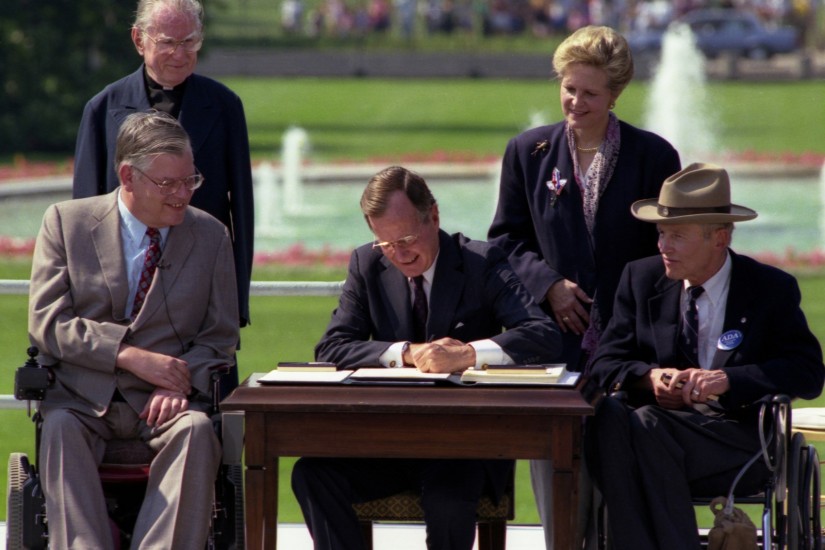Many Americans were surprised that some of the most militant responses to the proposed Republican health care plan came from disability activists – who staged a “die-in” outside the office of Senate Majority Leader Mitch McConnell that resulted in a woman being removed from her wheelchair as she was arrested. But in fact, the disability rights movement has for decades employed a battery of tactics, including mass protest and civil disobedience.
The passage of twenty six years has conferred a kind of nostalgic glow to our perception of the movement that put disability rights on the national stage. But grassroots disability activists regarded economic security and social welfare as part and parcel of their civil rights. This lead the National Federation of the Blind - the NFB - founded in 1940, to fight for full implementation of Aid to the Blind – resulting in the first federal aid program for disabled adults. The NFB also lobbied to raise the amounts people received under Aid to the Blind and heighten the privacy they enjoyed. In the 1960s, NFB leader Jacobus tenBroek advocated welfare rights for all Americans – disabled and nondisabled.
While far-reaching, the Americans with Disabilities Act - the ADA – failed to encompass rights to economic security or medical care. Part of the slack in this area is taken up by other policies, such as Supplemental Security Insurance or SSI, Social Security Disability Insurance or SSDI, and Medicaid. But none of these programs is premised on the idea of disability rights – and all are currently targeted for cuts by the White House and its congressional allies.
